The XDR Collector runs as a service in your environment. While the minimum specifications are listed below, the required resources depend on the number of active integrations and the amount of data being processed.
Install the XDR Collector on each server you want to monitor.
Minimum Requirements
To set up the XDR Collector, the minimum requirements are the following:
| Minimum requirements | |
|---|---|
| CPU | 2vCPU |
| Disk Size | 10GB SSD |
| Memory | 1GB |
| Network interface card (NICs) | 2 |
Operating System
- Windows Server 2016 and higher
- Windows 10 and higher
Windows Server 2022 is recommended.
IP Address Requirements
Two private static IP addresses are required, one for each Ethernet interface.
Required Endpoint/Port Communication
The XDR Collector must be able to communicate to the following endpoints/ports:
Logstash | a96190b49bd294a5fbb3725ff20aab78-c7f64fe7557a87d2.elb.us-east-1.amazonaws.com:5044 |
Management Server | b5e9a5096e0a4f7782cc444c8edbbd5e.fleet.us-east-1.aws.found.io:443 |
Update Server | artifacts.elastic.co:443 |
Setting up the XDR Collector
To set up the XDR Collector, you must do the following procedures:
- To configure a static IP address
- To install the XDR Collector
- To set up switch port mirroring
- To install Suricata
- To create the log cleanup scheduled task
To configure a Static IP Address
Configure a static IP address for each Ethernet interface. See the documentation for your specific version of Windows.
To install the XDR Collector
- In Barracuda XDR Dashboard, click Infrastructure > Collectors.
- In the Policies table, next to the on-prem policy, click Action > Install.
- Click Windows.
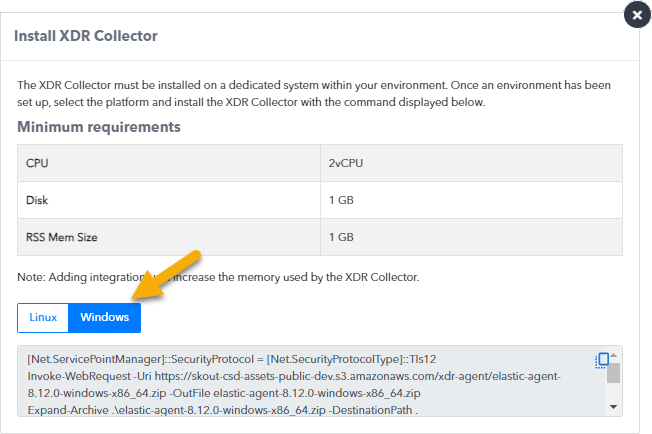
- Copy the command at the bottom of the dialog box.
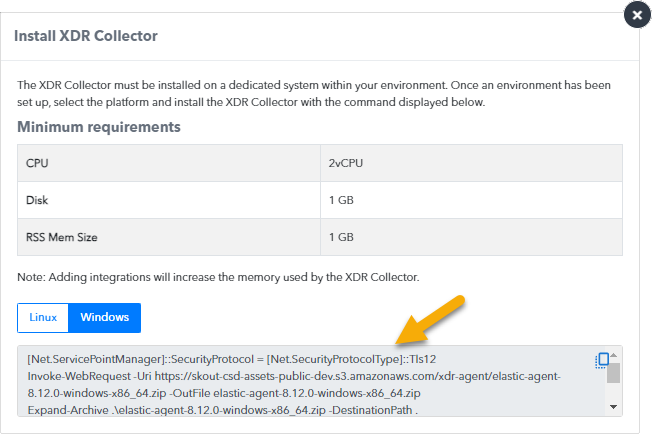
- On the appropriate system, run Powershell as an administrator, paste the command, and run it.
To set up Switch Port Mirroring
- Connect the secondary Ethernet interface on the XDR Collector's host machine to the mirrored port on the switch.
- Configure the switch to mirror traffic in both directions on all other ports on the switch.
To install Suricata
Download and install NPCAP (https://npcap.com/#download)
- Download and install Suricata from https://suricata.io/download/
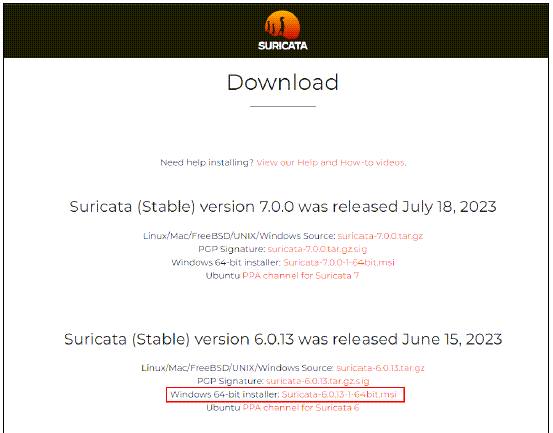
- As Administrator, open PowerShell and navigate to the Suricata installation directory (C:\Program Files\Suricata)
Open suricata.yaml in a text editor and change the stats interval to 86400.
Add the filename and rotate-interval under outputs eve-log.
- Save the file.
- Install the Suricata service with the following option:
.\suricata.exe -c .\suricata.yaml -i <X.X.X.X> --service-install
Where<X.X.X.X>is the IP address of the host machine's port connected to the switch port-mirroring destination port. - While keeping the PowerShell terminal active, open the services.msc interface and start the Suricata service
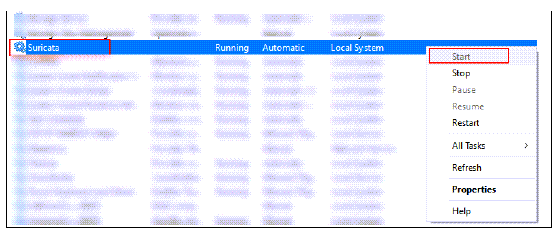
- In services.msc, set the Suricata service properties startup type to "Automatic (Delayed Start)" and the recovery options to "Restart the Service" after 2 minutes.
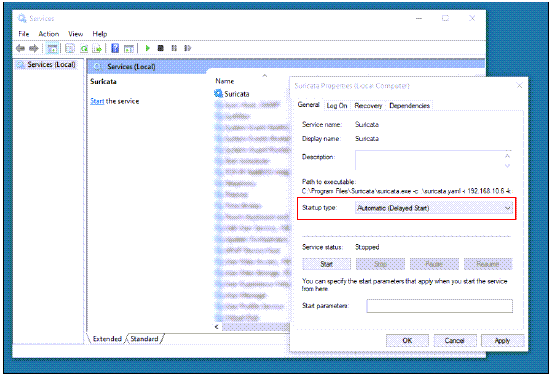

To create the log cleanup scheduled task
This script removes log files older than 30 minutes and creates a scheduled task to execute log removal every 90 minutes.
- Download the PowerShell script and move it to
C:\Program Files\Suricata\. - Open PowerShell as an Administrator and run the following:
& "C:\Program Files\Suricata\suricata-log-rotate.ps1"
